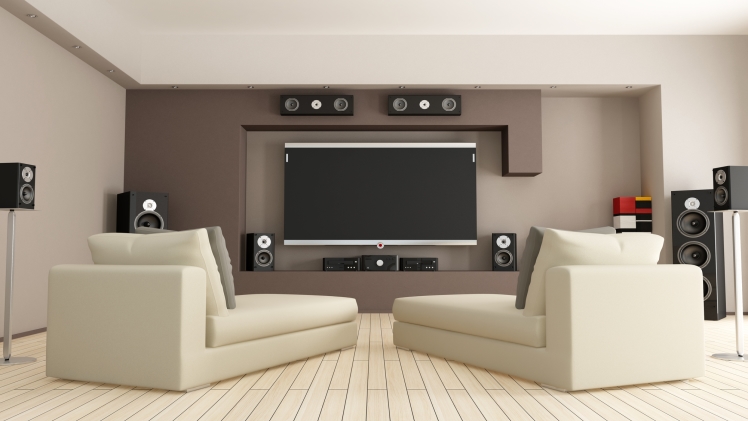The use of a home theatre system has become prevalent in recent years. Home theatre systems enhance your living space and allow you to watch movies in your pyjamas. The process of installing a home entertainment system needs some study, time, and money. When building a full-fledged home theatre system, there are various factors to consider, including home cinema seating, speaker quality, screen size, room type, lighting, and more.
Cables and Player
For your home theatre, you’ll need a high-quality DVD player and video cords. HDMI cables are the best way to get high-definition signals. Make that your DVD player and audio-video cords are compatible with one other as well. Consult with home theater professionals at The Grid for the best way to assemble your DVD player and audio video cords without making too much of a cable mess.
Screen
An essential component of a home entertainment system. If you’re watching a movie, make sure the screen is crystal clear and the correct size. High-definition television or a screen with a projector may be used. It’s entirely up to the individual’s taste and financial situation. A ceiling-mounted projector may provide the illusion of an actual movie theatre. You may, however, opt for a high-definition HD television screen if you have the funds available. Remember that the size of the screen (whatever you choose) should match the size of the room.
Screen-to-seating distance
A satisfying viewing experience necessitates that the screen is placed at the proper distance from the audience. Distance between screen and seating arrangement should be around three times the screen’s size.
Surround Sound: The quality and placement of speakers are very crucial. Surround sound enhances the immersive experience of viewing a movie or other media. The speakers should be set up so that everyone in the room hears the best sound. It is important to remember that the centre speaker must be positioned either above or below the display. On each side of the screen, the primary speakers should be used. In addition, each of the room’s four corners should have a pair of surround speakers. To get a comparable effect without using a full organic surround sound, there are 5.1 soundbars for living rooms that can be purchased. Because of their tiny size and mobility, they are a popular choice.
Calming lighting
Watching a movie is much more enjoyable when the room is adequately lit. Your eyes need a little light to acclimatise to the screen’s brightness, so turn on a lamp or two. The screen’s brightness might strain the eyes if the environment is dark, making it difficult to enjoy a movie. It’s a good idea to use low lighting in your home theatre room’s walls and ceiling.
Visit Here: magazines2
Furniture That Makes You Feel at Home
The pleasure of viewing a movie is multiplied tenfold if you have cosy home cinema seating. Comfortable couches and recliners with suitable armrests should be your first choice if you have the money. However, if you’re on a tight budget, a regular sofa is an excellent choice.
Type of Room
Having your home theatre in a sound-proofed and isolated room would be ideal so that you can enjoy your movie without interruption from the outside world. Your neighbours won’t be able to file a noise complaint against you if you keep the level low enough. If you don’t have a quiet room in your house, you may sound-proof it using thick padding rugs and heavy drapes.
Assembled Correctly
There are a lot of wires and cords in your home theatre setup. The process of setting up such a gadget might be complicated. It’s also critical to situate the projector correctly if you want to use a screen with a projector. So if you need assistance installing a home cinema, get in touch with a professional.
Visit The Site: artdailymagazine
There’s A Breathing Space
There are dangers associated with overheating electronic devices. Do not cram them into an unventilated cupboard and give them room to breathe.
Read More About: magazineview

